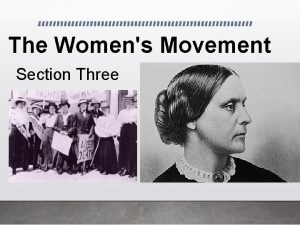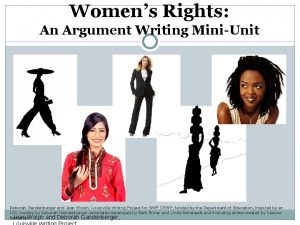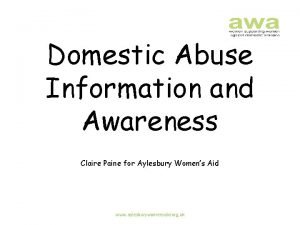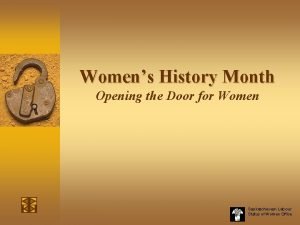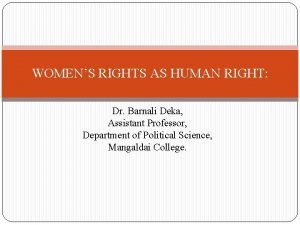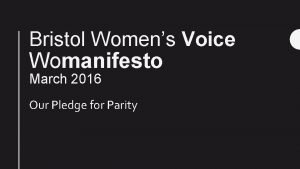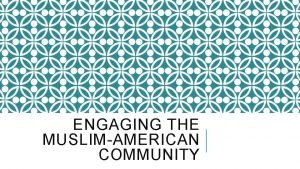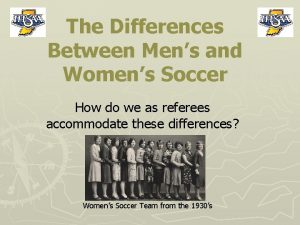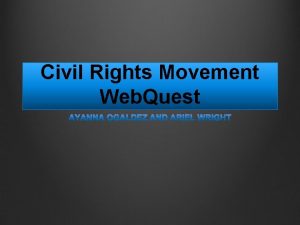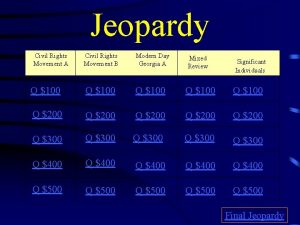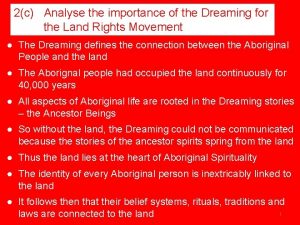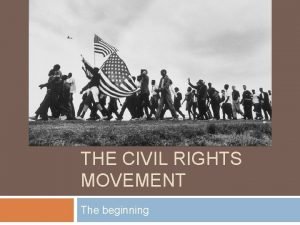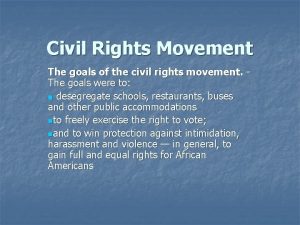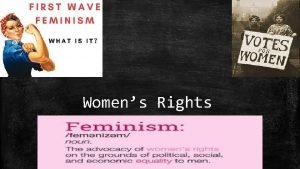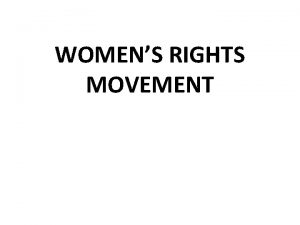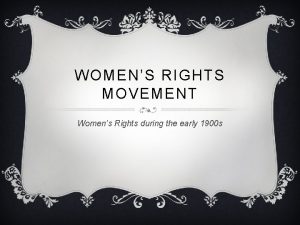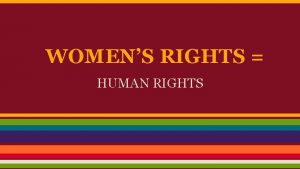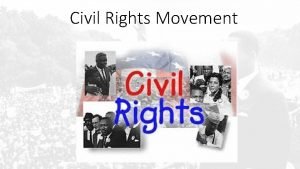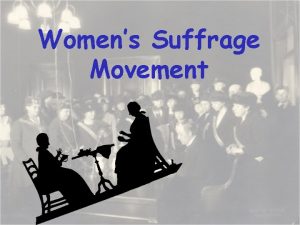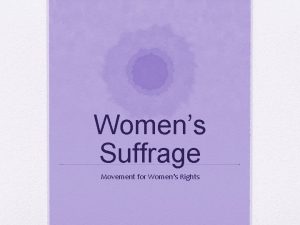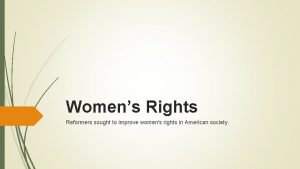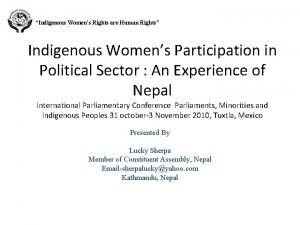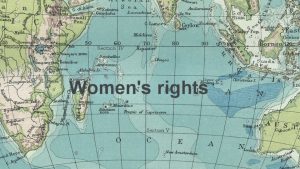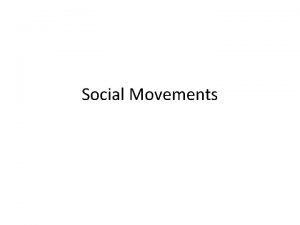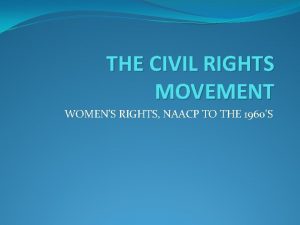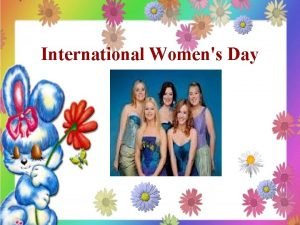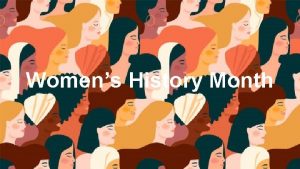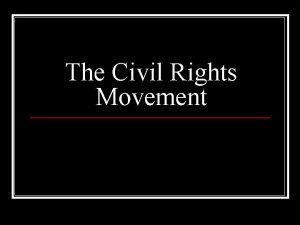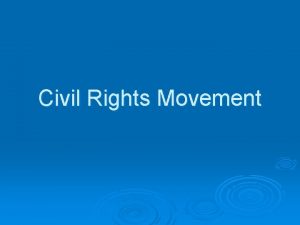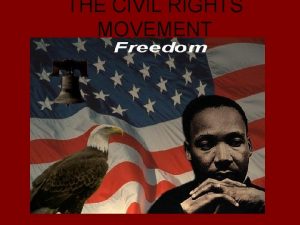Womens Rights Movement of the mid1800 s Propertyowning































- Slides: 31

Women’s Rights Movement of the mid-1800 s

Property-owning New Jersey women could vote from 1776 to 1807.

Revolutionary America • During the time of the Revolutionary War “It was almost universally believed that a woman’s brain was smaller in capacity and therefore inferior in quality to that of a man. ”

Early Advocates for Women • Abigail Adams -“Remember the ladies!” • Anne Hutchinson – challenged the authority of male religious leaders in Puritan Massachusetts.

Republican Motherhood • The concept related to women's roles as mothers in the emerging United States before and after the American Revolution (c. 1760 to 1800). • It centered around the belief that children should be raised to uphold the ideals of republicanism, making them the perfect citizens of the new nation.

Early 19 th century Women 1. Unable to vote. 2. Legal status of a minor. 3. Single could own her own property. 4. Married no control over her property or her children. 5. Could not initiate divorce. 6. Couldn’t make wills, sign a contract, or bring suit in court without her husband’s permission.

Changes in American life during the Industrial Revolution • Division between work and home

Cult of Domesticity Ø A new ideal of womanhood and a new ideology about the home arose out of the new attitudes about work and family. Ø Called the "cult of domesticity, " Ø A woman’s “sphere” was in the home (it was a refuge from the cruel world outside). Ø Her role was to “civilize” & educate her husband family. Charles Dana Gibson, No Time for Politics, 1910

Cult of Domesticity – Piety: Nineteenth-century Americans believed that women had a particular propensity for religion. The modern young woman of the 1820 s and 1830 s was thought of as a new Eve working with God to bring the world out of sin through her suffering, through her pure, and passionless love. – Purity: Female purity was also highly revered. Without sexual purity, a woman was no woman, but rather a lower form of being, a "fallen woman, " unworthy of the love of her sex and unfit for their company.

Cult of Domesticity – Domesticity: Woman's place was in the home. Woman's role was to be busy at those morally uplifting tasks aimed at maintaining and fulfilling her piety and purity. – Submissiveness: This was perhaps the most feminine of virtues. Men were supposed to be religious, although not generally. Men were supposed to be pure, although one could really not expect it. But men were never supposed to be submissive. Men were to be movers, and doers--the actors in life. Women were to be passive bystanders, submitting to fate, to duty, to God, and to men.

The 2 nd Great Awakening inspired women to improve society. Cult of Domesticity = Slavery Angelina Grimké Ø Sarah Grimké Southern Abolitionists Lucy Stone § American Women’s Suffrage Assoc. § edited Woman’s Journal

Education for Women • The demand for women suffrage emerged in the first half of the 19 th century from within other reform movements. • In 1821, Emma Hart Willard opened the first endowed institution for the education of women – Troy Female Seminary in Troy, New York

The Temperance Crusade

The Abolition Movement The radical abolition movement had the greatest impact on women’s rights.

Women in the abolition movement recognized parallels between the legal condition of slaves and that of women.

Angelina and Sarah Grimké The Grimké sisters, nationally prominent abolitionists, connected the inequalities of women, both white and black, with slavery.

Sojourner Truth Participation in the Anti-Slavery movement helped women develop public-speaking and argumentative skills that carried over into the women’s rights movement. “Ain’t I a Woman? ” speech by Sojourner Truth in 1851

Both white and black women were excluded from full membership in the American Anti. Slavery Society until 1840. Women responded by forming their own separate female auxiliaries—by 1838, over 100 existed.

1840: The World Anti-Slavery Society denied women delegates the right to speak.

Elizabeth Cady Stanton attended the 1840 Anti. Slavery Convention and her experience led her into the struggle for women’s rights. "We resolved to hold a convention as soon as we returned home, and form a society to advocate the rights of women. "

Women’s Rights Movement 1840 split in the abolitionist movement over women’s role in it. London World Anti-Slavery Convention Lucretia Mott Elizabeth Cady Stanton 1848 Seneca Falls Declaration of Sentiments

Elizabeth Cady Stanton and Lucretia Mott met in 1848 to organize a convention to promote “the social, civil, and religious rights of women. ”

The Seneca Falls Women’s Rights Convention, 1848

“. . . The history of mankind is a history of repeated injuries and usurpations on the part of man toward woman, having in direct object the establishment of an absolute tyranny over her. . He has never permitted her to exercise her inalienable right to the elective franchise. He has compelled her to submit to laws, in the formation of which she has no voice. . . ” The first signatures on the Declaration of Sentiments. Elizabeth Cady Stanton, The Declaration of Sentiments

The Seneca Falls Convention was the “birthplace of the women’s rights movement. ”

The demand for woman suffrage presented a vision of independent women that seemed to threaten social structures.

Before the Civil War, black and white men and women worked together for women’s rights and the abolition of slavery. Frederick Douglass demanded the vote for women in 1848.

The 14 th Amendment to the Constitution added “male” to its definition of eligible voters—women would need another amendment explicitly granting them the franchise.

War, and the Reconstruction that followed, split the Women’s Rights movement.

Both Susan B. Anthony and Elizabeth Cady Stanton were furious that Congress had given the vote to black men but denied it to women. This image made the point that, in being denied the vote, respectable, accomplished women were reduced to the level of the disenfranchised outcasts of society. “Bad Romance” parody

 Womens rights
Womens rights Womens rights
Womens rights Scarborough womens centre
Scarborough womens centre Ballybeen womens centre
Ballybeen womens centre Womens college kumbakonam
Womens college kumbakonam Function of uterine cavity
Function of uterine cavity Aylesbury womens aid
Aylesbury womens aid Womens lacrosse helmets
Womens lacrosse helmets Womens college kumbakonam
Womens college kumbakonam Womens history month door
Womens history month door Womens right
Womens right Bristol womens voice
Bristol womens voice Womens right
Womens right Needs of adolescence
Needs of adolescence Womens community shelters
Womens community shelters Difference between mens and womens soccer
Difference between mens and womens soccer Womens shelter edmonton
Womens shelter edmonton Late night womens hour
Late night womens hour Riparian and littoral rights
Riparian and littoral rights Negative rights vs positive rights
Negative rights vs positive rights Conclusion of rights
Conclusion of rights Positive vs negative rights
Positive vs negative rights Legal rights and moral rights
Legal rights and moral rights Negative right
Negative right Positive rights and negative rights
Positive rights and negative rights Negative rights
Negative rights Rosa parks mother
Rosa parks mother Civil rights movement webquest
Civil rights movement webquest Civil rights movement jeopardy
Civil rights movement jeopardy Importance of dreaming for land rights movement
Importance of dreaming for land rights movement The civil rights movement
The civil rights movement Civil rights movement goal
Civil rights movement goal
